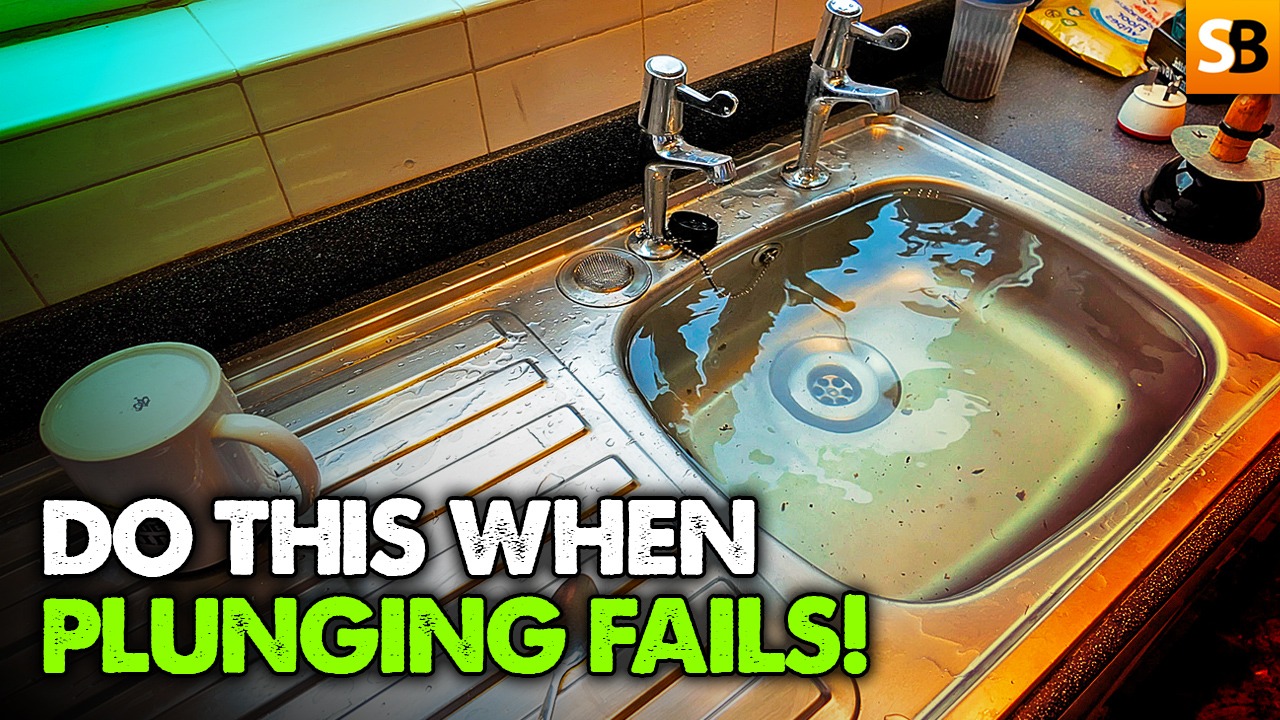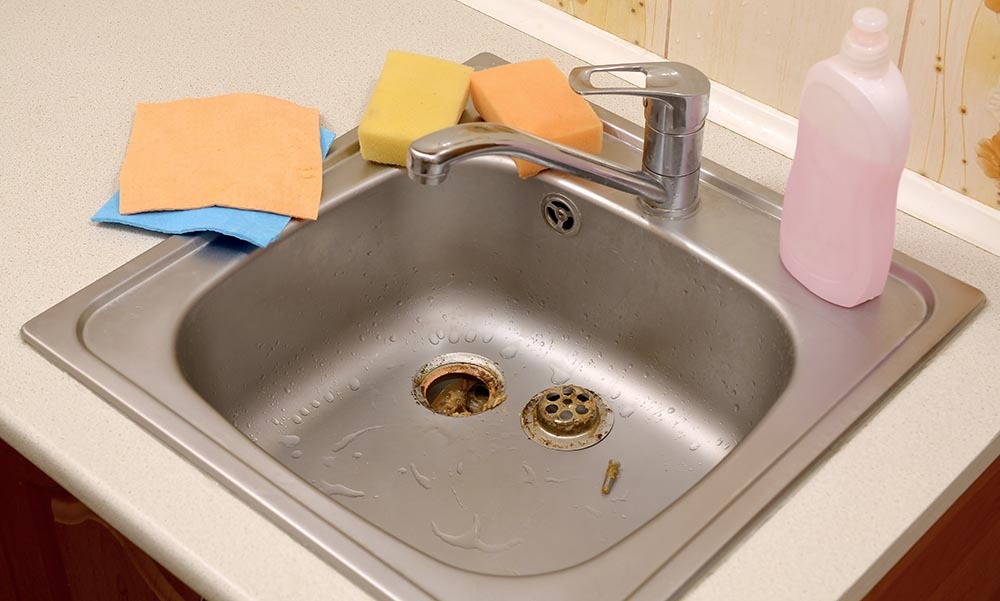Before you reach for the plunger, we’ll show you how to unblock a sink!
Step 1: Understand the Cause of the Blocked Sink
Before you start trying to unblock your sink, it’s essential to understand what might be causing the issue:
- Common Causes: Accumulation of food waste, grease, soap scum, and other debris.
- Location of the Blockage: It can be in the sink trap (U-bend), further down the drain pipe, or even in the main drainage line.
Step 2: Gather Your Tools
You will need a few basic tools and items:
- Plunger
- Bucket
- Flexible plumbing snake or drain auger
- Screwdriver (to remove sink parts)
- Rubber gloves
- Cloth or rag
Step 3: Check the Sink Trap (U-Bend)
The first place to check when trying to unblock a sink is the trap, also known as the U-bend:
- Place a bucket under the sink to catch any water or debris.
- Unscrew the trap carefully by hand (it should be hand-tight).
- Inspect the inside of the trap for any visible clogs.
- Clean out any debris, rinse the trap, and then reattach it.
If this doesn’t resolve the problem, the blockage might be further down the line.
Step 4: Use a Plunger to Create Pressure
Plunging is often the first line of defence against a blocked sink:
- Seal Off Other Openings: Block off any secondary outlets, like washing machine pipes, with a cloth. This ensures maximum pressure.
- Fill the Sink with Water: This will help create a strong suction.
- Start Plunging: Place the plunger over the drain and pump up and down quickly.
- Check Results: If the water drains, you’ve likely dislodged the blockage. If not, move to the next step.
Step 5: Clear the Drain with a Plumbing Snake
If plunging didn’t work, a plumbing snake might do the trick:
- Remove the Sink Trap Again: This gives you better access to the drain pipe.
- Insert the Snake: Feed the snake down the pipe, turning the handle to help it move through it.
- Push Through the Blockage: Continue feeding the snake until you feel resistance, which indicates you’ve reached the clog. Turn and push to break up the blockage.
- Retract the Snake: Pull it out slowly, bringing any debris.
- Reassemble the Sink Trap: Once the blockage is cleared, reattach the trap and run water to check if the problem is solved.
Step 6: Check the External Drain or Manhole (If Necessary)
If the sink is still blocked, the issue may be outside your home:
- Locate the Manhole: Look for the external drain cover or manhole.
- Open and Inspect: Check if there’s any visible blockage. If there is, you might need to call a professional plumber.
- Shared Drains: In some cases, blockages in shared drains are covered by local authorities. Check with your council if you suspect this is the case.
Step 7: Test the Sink and Prevent Future Blockages
Once you’ve successfully unblocked the sink, make sure everything is working properly:
- Run Water: Let the tap run for a few minutes to ensure the water flows freely without backing up.
- Use a Drain Strainer: A drain strainer can catch food, hair, and other debris and prevent future blockages.
- Regular Cleaning: To prevent build-up, clean your drains with hot water and a mild drain cleaner.
Final Tips to Unblock a Sink
- Avoid Harsh Chemicals: They can damage your pipes and are often unnecessary.
- Know When to Call a Professional: If you can’t clear the blockage, it may be a sign of a more severe plumbing issue that requires expert help.
- Locate Your Manholes: Make sure external drains and manholes are easily accessible for future maintenance.
Final Thoughts
Blocked sinks are inconvenient, but you can often fix them with the right tools and techniques. Following these simple steps teaches you how to unblock a sink effectively. Regular maintenance and innovative prevention will help keep your drains clear and reduce the chances of future blockages.
By taking these steps, you can save yourself the cost of calling a plumber and maintaining a healthy plumbing system in your home.
Further Reading:
▶ How To Solder Copper Pipes Like a Pro
See more about DIY plumbing on Skill Builder





